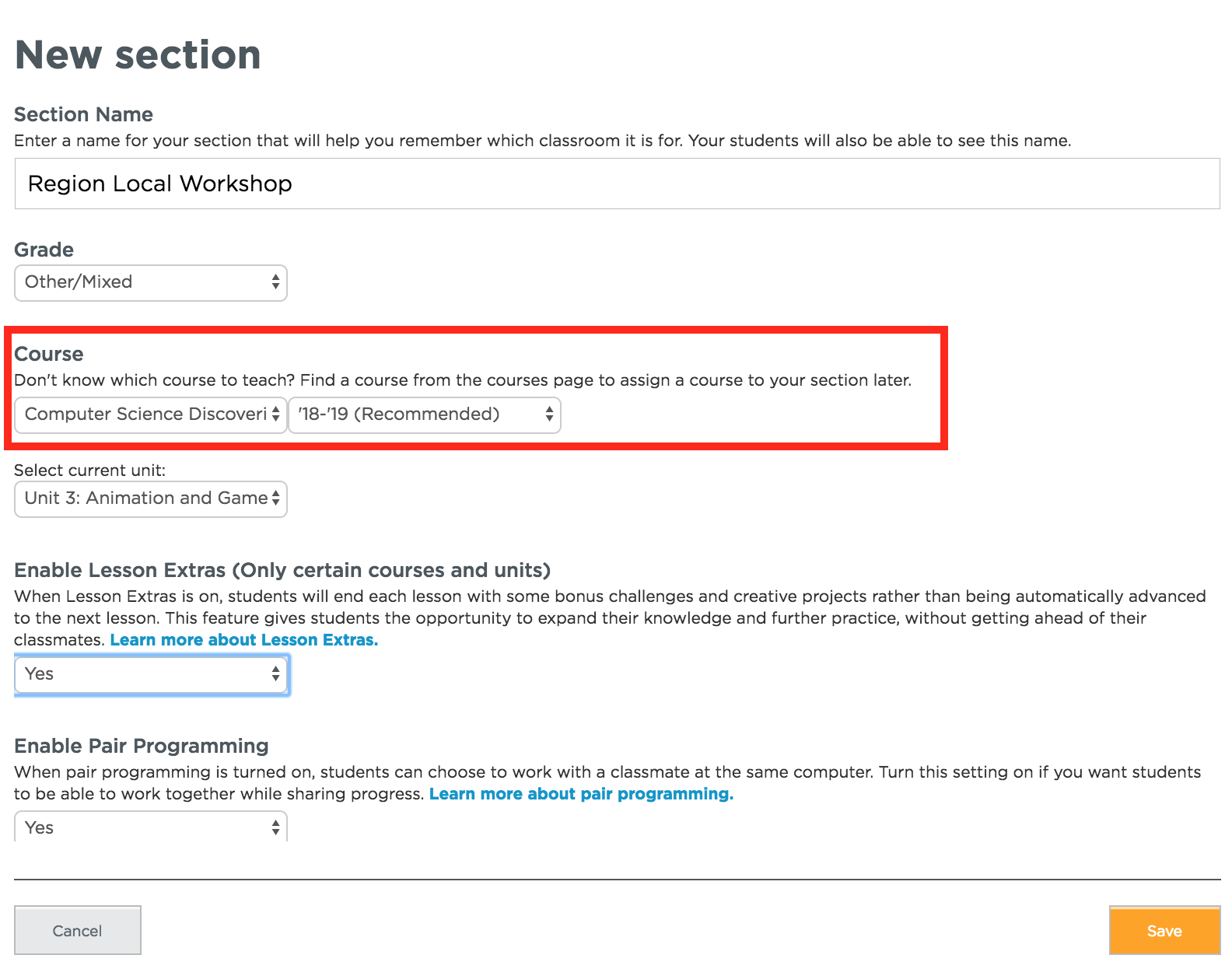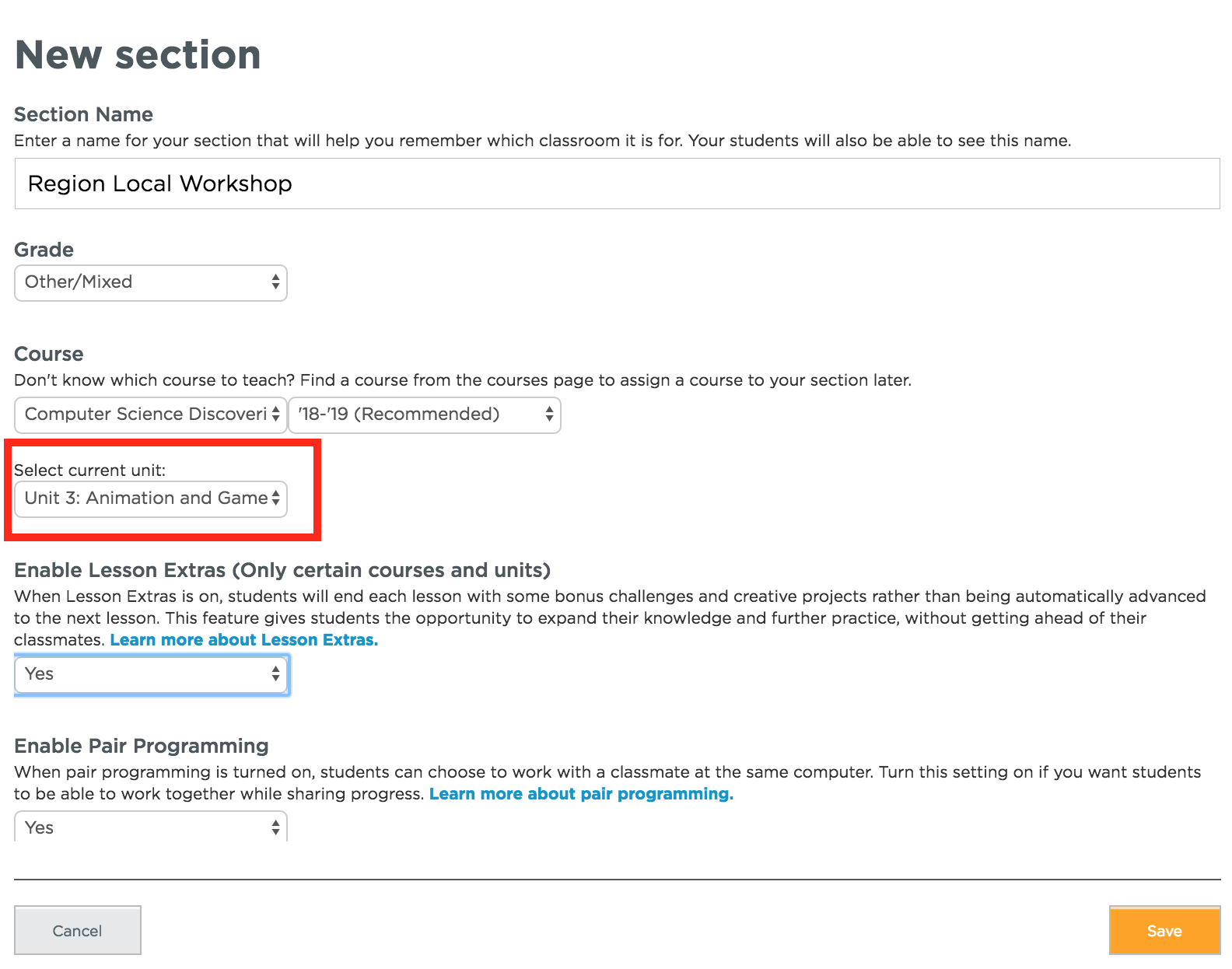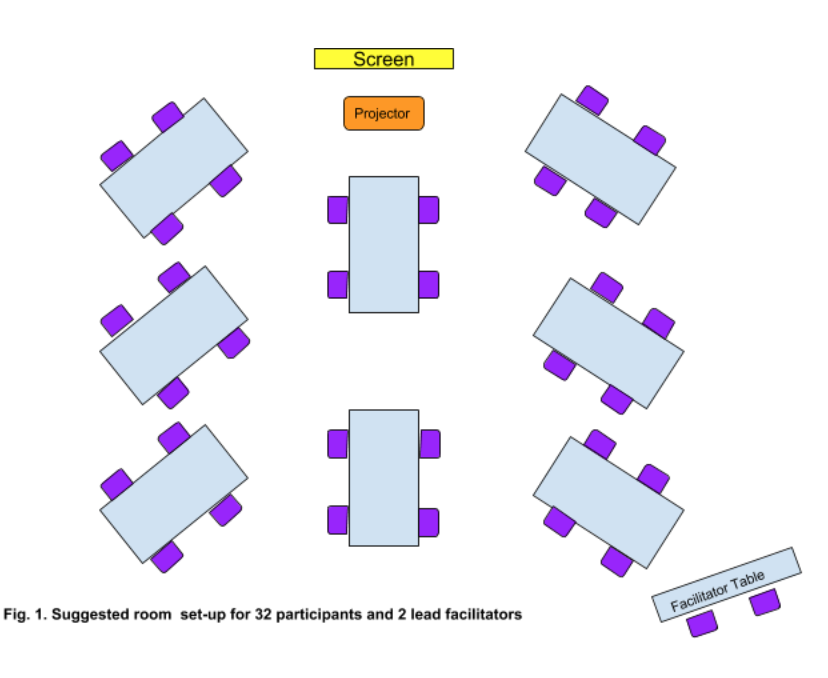CS Discoveries 2021-22 In-Person Workshop 1
Agenda Walkthrough Resources
In place of the agenda walkthough video, we now have a series of resources designed to help facilitators familiarize themselves with the workshop agenda.
-
Workshop Goals and Objectives
The document outlines the overall goals and outcomes for Workshop 1 along with where in the workshop these goals and outcomes are addressed. We recommend you reviewing this document before reading the agenda. -
Opportunities for Equity
This resource calls out opportunities for a facilitator to create an equitable workshop environment and ways for teachers to create an equitable classroom environment in a programming unit. We recommend reviewing this resource after reviewing the agenda for workshop 1. -
Essential Content
It is important for facilitators to be familiar with all content in Unit 3 before facilitating workshop 1. This resource identifies specific lessons of focus within workshop 1. We recommend reading this resource after reading the full agenda. This resource is especially recommended for new facilitators or facilitators that are new to CS.
Printing Agendas
Go to https://curriculum.code.org/plcsd-21/q1/compiled. When you get to that page right click. From the menu that pops up click print. From there you should be able to print or save it as a PDF.
For the high level agenda(like one on the right) that is printable and editable go to:
Google Sheet View of High Level Agenda
Recommended Workshop Timing:
- Covering content that is scheduled for weeks 10 - 16 (Unit 3) of the year. Workshop should be 5 - 8 weeks into the school year. Err on the earlier side.
Goals
- Time to share/discuss highlights and concerns from your classroom
- Time to discuss region specific concerns or interests
- Prepare to teach upcoming lessons. Try activities and discuss each type of lessons teachers will see in unit 3.
- Reflect on classroom practices and continue to grow and transform teaching practice
- Build the community of teachers
- Discuss how you have been addressing assessment in your classroom and look at future assessments to plan for ways to assess student learning in the future.
- Reflect on the student needs that come up in your classroom, how you have had to adapt to those needs, and what needs you are still in need of more ways to support.
Prepping for Sessions
Review Past Workshop(s)
Review how things went during your Previous Workshop
- Review your feedback from teachers in the Workshop Dashboard to see what needs you can address and how you can continue to improve you local workshops
- Talk about feedback for each other in how you can better prepare for the workshop together, how you run certain sessions, and other ways you can grow as individuals and a team
- Make a plan together for actions you are going to take during this workshop to improve
Supplies
| Provided By Regional Partner | Teachers Should Bring |
|---|---|
| Room set up for table groups of 4-5 teachers Room with reliable wifi Power Strips Projector Speaker System 24 Pens 2 Easel Pads 10 Large 3x4 Post-it Notes 16 Medium 3x3 Post-it Notes 12 Small 1x2 Post-it Notes 8 sets 8-pack Markers Blue Painter's Tape Scissors |
Printed Curriculum Guide Journal Computers |
Connect with your regional partner
Prior to the workshop find time to meet in person or virtually with both facilitators and the regional partner to discuss:
| Subject | Conversation Points |
|---|---|
| Supplies |
|
| Online Workshop Dashboard |
|
| Venue |
|
| Workshop Timeframe |
|
| Food |
|
| Agenda |
|
| Staff |
|
Review Materials
On your own review the following materials so you are familiar with the details of each.
| Facilitator Materials | Teacher Materials |
|---|---|
|
Make a plan
You should go through every session to make a plan for how you and your co-facilitator will support each other in running the session.
Use the Session Planning Template to guide your planning.
Don't forget to check the pre-survey results to determine what lessons to focus on during the TTL progression. The survey gets sent out to teachers automatically 10 days before the workshop. You can view the results on the Workshop Dashboard.
Create Materials For Region
- A copy of the CSD - Workshop 1 - Template 21-22 - Slides for the workshop, that you have updated according to your needs.
- Set up a section for your workshop participants to join (if everyone is already in one together from summer then you are all set!):
- Create a new section using the email login type

- Make sure it is assigned to CS Discoveries for 2021 - 22

- Assign the course to Unit 3

- Enable Pair Programming for that section

- Enable Lesson Extras for that section

- Create a new section using the email login type
First Morning Of Workshop
Room Setup
Using the supplies provided by regional partner set up the room. In the agenda we will call this the "Normal Breakout Room Set Up".

- Tech
- Reliable guest wifi - check this as early as possible
- Projector (separate table for projector)
- Speaker System
- 8 Teacher Tables (for 32 teachers) with:
- 4 chairs at each table
- Table angled toward projector screen
- Surge protectors in middle of each table
- 4-5 post-it note pads of different sizes
- 3-4 Pens
- Facilitator Table:
- Located in the back of the room
- 2-3 chairs at table (need chairs for lead facilitators and apprentices)
Create Posters
- Posters up for people to add post-its to as they come in
- Question Parking Lot - For people to put up questions they have.
- “Where are we now” - On a piece of chart paper or on the board create a histogram for teachers to add where they are in the curriculum. Remind teachers to take out their Curriculum Guides as a guide to unit progressions.
Concerns?
If you need to raise concerns before or during the workshop about issues that require immediate attention (internet, health issues, etc.) you should contact your regional partner.